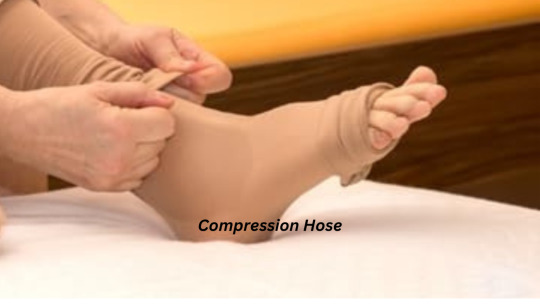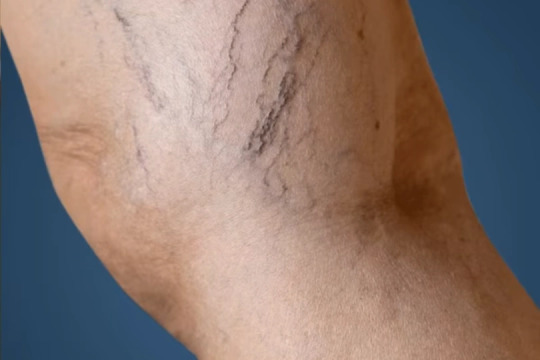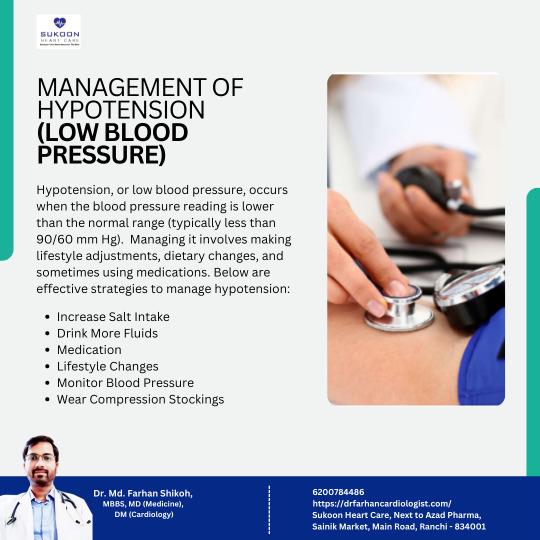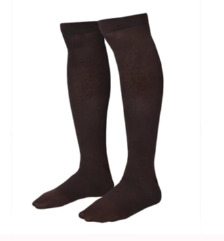#CompressionStockings
Explore tagged Tumblr posts
Text

#compressionstockings#varicose veins#varicoseveintreatment#venous insufficiency diet#vein specialist
0 notes
Text
The Power of Compression Stockings: Why They’re Essential for Your Health and Well-being
Compression stockings are more than just a fashion accessory—they are a valuable health tool that can have a significant impact on your overall well-being. Whether you’re dealing with poor circulation, recovering from surgery, or looking to prevent the onset of certain health conditions, compression stockings can provide the support your body needs. In this blog post, we’ll explore the numerous benefits of compression stockings, how they work, and why they are essential for people of all ages and lifestyles.

What Are Compression Stockings?
Compression stockings are specially designed garments that apply gentle pressure to your legs and feet. This pressure helps improve blood circulation, reduce swelling, and alleviate pain caused by various conditions, such as varicose veins, deep vein thrombosis (DVT), and chronic venous insufficiency. Unlike regular socks, compression stockings are made from elastic material that offers graduated compression—meaning the pressure is greatest at the ankle and gradually decreases as the stocking moves up the leg.
These stockings are available in various sizes, styles, and compression levels to suit different needs. Compression stockings come in knee-high, thigh-high, or full-leg varieties, each designed for specific uses. While they are often associated with medical treatments, compression stockings are also popular among athletes and people who spend long hours standing or sitting.
Why Are Compression Stockings Important?
Compression stockings are an essential tool in maintaining healthy circulation. Poor circulation can lead to a variety of issues, including swelling, varicose veins, and even blood clots. Here's why compression stockings are so important:
Improved Circulation: The main purpose of compression stockings is to improve blood flow. By applying pressure to the legs, they help veins return blood to the heart, preventing it from pooling in the lower extremities.
Reduced Swelling: Swelling, especially in the lower legs and feet, can be a result of standing or sitting for long periods, pregnancy, or certain medical conditions. Compression stockings can help prevent and reduce swelling by encouraging proper fluid movement.
Pain and Discomfort Relief: Conditions like varicose veins and muscle fatigue can cause discomfort and pain. The graduated pressure of compression stockings helps reduce pain and discomfort by supporting the veins and muscles in the legs.
Prevention of Varicose Veins: Varicose veins occur when veins become enlarged, swollen, and twisted. Wearing compression stockings can help prevent the development of varicose veins by improving circulation and reducing pressure on the veins.
DVT and Blood Clot Prevention: Deep vein thrombosis (DVT) occurs when a blood clot forms in a deep vein, often in the legs. Compression stockings can help reduce the risk of DVT by improving blood flow and preventing blood from pooling in the veins.
How Do Compression Stockings Work?
Compression stockings work by applying controlled pressure to the legs, which helps the veins and muscles function more efficiently. They provide graduated compression, meaning the pressure is strongest at the ankle and decreases as it moves up the leg. This helps guide the blood back toward the heart and prevents it from pooling in the lower extremities.
Here’s a breakdown of how compression stockings work:
Graduated Pressure: The compression is strongest at the ankle, and it gradually decreases as it moves upward. This graduated pressure encourages blood flow from the legs to the heart and prevents swelling.
Elastic Material: Compression stockings are made of elastic materials like spandex, nylon, and rubber, which allow the garment to fit snugly while still providing comfort and support.
Comfortable Fit: While the stockings apply pressure, they are designed to fit comfortably and are made from breathable fabrics to ensure they don’t cause discomfort.
Who Should Wear Compression Stockings?
Compression stockings are beneficial for a wide range of people, from those with medical conditions to those looking to enhance their athletic performance. Here’s a breakdown of who should consider wearing compression stockings:
People with Poor Circulation: If you have conditions such as varicose veins, venous insufficiency, or lymphedema, compression stockings can help improve circulation and reduce symptoms like swelling, discomfort, and fatigue.
Pregnant Women: Pregnant women often experience swelling and discomfort in their legs and feet. Compression stockings can help alleviate these symptoms by reducing swelling and improving blood flow.
Athletes: Athletes can benefit from compression stockings to improve performance and reduce muscle soreness. By promoting better circulation, these stockings help speed up recovery after intense exercise.
People with Jobs that Require Long Hours of Standing or Sitting: If you spend long hours on your feet or sitting at a desk, compression stockings can help reduce fatigue and prevent swelling in the legs.
Travelers: Long flights or car trips can increase the risk of blood clots and swelling in the legs. Wearing compression stockings during travel can reduce these risks and make the journey more comfortable.
Choosing the Right Compression Stockings
Selecting the right compression stockings depends on your specific needs, body size, and the condition you're trying to address. Here are a few factors to consider:
Compression Level: Compression stockings come in different compression levels, which are measured in millimeters of mercury (mmHg). Common compression levels include:
Mild Compression (8-15 mmHg): Ideal for preventing minor swelling and discomfort.
Moderate Compression (15-20 mmHg): Best for people with mild varicose veins, swelling, or those who are pregnant.
Firm Compression (20-30 mmHg): Recommended for moderate to severe varicose veins, DVT prevention, or post-surgery recovery.
Extra Firm Compression (30-40 mmHg): Used for severe circulatory issues or edema management.
Size and Fit: Compression stockings should fit snugly, but not too tight. Proper fit is crucial to ensure the stockings are effective and comfortable. Be sure to measure your legs accurately to choose the right size.
Style and Length: Compression stockings are available in knee-high, thigh-high, and full-leg lengths. The choice depends on your specific needs and where you experience discomfort or swelling. For example, knee-high stockings are ideal for people with mild swelling, while full-leg stockings are better for those with more extensive issues.
Material: Compression stockings are made from a variety of materials, including nylon, spandex, and cotton. Consider the breathability, comfort, and durability of the material when choosing the right pair for you.
Benefits of Compression Stockings for Specific Conditions
Compression stockings offer relief and prevention for several medical conditions. Let’s explore the benefits of compression stockings for specific health issues:
Varicose Veins: Varicose veins occur when the veins become enlarged and swollen, often causing pain and discomfort. Compression stockings apply pressure to the veins, helping to reduce swelling and discomfort and prevent the condition from worsening.
Deep Vein Thrombosis (DVT): DVT is a condition where a blood clot forms in a deep vein, typically in the legs. Compression stockings help reduce the risk of DVT by improving blood flow and preventing blood from pooling in the veins.
Chronic Venous Insufficiency: This condition occurs when the veins are unable to efficiently return blood to the heart, leading to symptoms like swelling, heaviness, and pain. Compression stockings improve circulation, helping to manage symptoms and prevent further complications.
Lymphedema: Lymphedema is the buildup of fluid in the body’s tissues, often affecting the legs. Compression stockings help reduce swelling and encourage fluid movement, providing relief for those with lymphedema.
Pregnancy: Pregnant women often experience swelling in their legs and feet due to hormonal changes and increased pressure on the veins. Compression stockings can help alleviate these symptoms and prevent further complications.
Post-Surgery Recovery: After surgery, particularly leg surgery, compression stockings can help prevent blood clots and promote healing by improving circulation and reducing swelling.
How to Care for Your Compression Stockings
Proper care and maintenance of compression stockings are essential to ensure their effectiveness and longevity. Here are some tips for caring for your compression stockings:
Wash Regularly: Compression stockings should be washed regularly to remove sweat and dirt. Hand washing is recommended, but some stockings are machine washable—be sure to check the care instructions.
Avoid Fabric Softeners: Fabric softeners can break down the elasticity of the stockings, reducing their effectiveness. Avoid using fabric softeners when washing.
Air Dry: Never put compression stockings in the dryer, as the heat can damage the fabric. Instead, air dry them by laying them flat.
Replace When Necessary: Over time, compression stockings lose their elasticity. If you notice a decrease in their effectiveness, it’s time to replace them.
Conclusion: Why Compression Stockings Are a Must-Have
Compression stockings are a powerful tool for improving circulation, reducing swelling, and preventing serious health conditions like varicose veins and DVT. They offer relief for individuals with poor circulation, athletes, pregnant women, and those who spend long hours standing or sitting. By choosing the right compression stockings for your needs and properly caring for them, you can experience improved health, comfort, and well-being.
If you’re considering compression stockings, explore the variety of options available at Diasocks and find the perfect pair for your health and lifestyle. With the right compression stockings, you can take proactive steps toward better circulation and overall wellness.
1 note
·
View note
Text
How Cold Weather Impacts Spider Veins & Ways to Manage Them

Discover the link between cold weather and spider veins. Learn how vasoconstriction, reduced activity, and dry skin worsen symptoms during winter. Explore expert tips on staying active indoors, moisturizing, wearing compression stockings, and eating a vein-friendly diet. For persistent pain or swelling, consult a specialist for advanced treatments like laser therapy or sclerotherapy. Keep your legs healthy all winter long!
#SpiderVeinsInWinter#ColdWeatherAndSpiderVeins#ManageSpiderVeins#WinterSpiderVeinsTips#SpiderVeinRemedies#CompressionStockings#DrySkinAndVeins#IndoorExerciseForVeins#PreventSpiderVeins#SpiderVeinTreatment#BestVaricoseVeinDoctor#SclerotherapyForVeins#LaserVeinTreatment#VeinFriendlyDiet#SpiderVeinRelief
1 note
·
View note
Text
Step Up Your Comfort Game with Plus Size Compression Stockings! 👟✨

Tired of aching legs after a long day? 😩 It’s time to upgrade your legwear with plus-size compression stockings and socks! These stylish, comfy stockings are designed to help with everything from swollen legs to varicose veins���and they’re perfect for fuller legs. 🌟
Whether you’re looking for something to wear while traveling, during long work shifts, or just lounging at home, these compression socks are the perfect solution for improved circulation and leg support. 💆♀️
⚡ Top Reasons You’ll Love Them:
Boosts Blood Flow: Compression helps blood flow smoothly through your legs, keeping them energized and reducing discomfort.
Reduces Leg Swelling: Long hours of standing or sitting? These socks help keep swelling at bay.
Stylish and Functional: Available in knee-high, thigh-high, and full-length styles so you can pick what suits your needs and vibe! 🌈
Whether you’re recovering from surgery, fighting leg fatigue, or just looking for a little extra leg support, plus-size compression stockings are your new BFF. 💜
Your legs deserve some TLC, and it starts here! 👏
0 notes
Text
Understanding the Management of Hypotension (Low Blood Pressure)

Hypotension, or low blood pressure, can lead to symptoms such as dizziness, fainting, and fatigue. Here are some effective management strategies:
1. Increase Salt Intake: Salt (sodium) can help raise blood pressure. Including more salt in your diet may be beneficial, but it's essential to consult a healthcare professional before making significant changes.
2. Drink More Fluids: Staying hydrated is crucial for maintaining blood volume and preventing dehydration, which can lower blood pressure. Drinking water and electrolyte-rich fluids can help.
3. Medication: In some cases, medications may be necessary to manage low blood pressure. These can include fludrocortisone and midodrine, among others. Always consult a doctor for a personalized treatment plan.
4. Lifestyle Changes: Implementing certain lifestyle modifications can significantly impact blood pressure levels. This includes eating smaller, more frequent meals, avoiding alcohol, and managing stress through relaxation techniques.
5. Monitor Blood Pressure: Regularly checking your blood pressure can help you and your healthcare provider track changes and determine the effectiveness of management strategies.
6. Wear Compression Stockings: Compression stockings can help improve blood flow and prevent blood from pooling in the legs, which may alleviate symptoms of hypotension.
For more information or personalized guidance, you can consult with Dr. Md. Farhan Shikoh, MBBS, MD (Medicine), DM (Cardiology) at Sukoon Heart Care, Sainik Market, Main Road, Ranchi, Jharkhand: 834001. You can reach him at 6200784486 or visit drfarhancardiologist.com for more details.
#Hypotension#LowBloodPressure#HeartHealth#HealthyLiving#Cardiology#SaltIntake#Hydration#LifestyleChanges#MonitorYourHealth#CompressionStockings#BestCardiologistinRanchi#BestHeartDoctorinRanchi#BestHeartSpecialistinRanchi#BestDiabetesDoctorinRanchi#sukoonheartcare#Ranchi#drfarhanshikoh
0 notes
Text
Struggling with varicose veins? Here are some easy tips to help you manage them:
Stay Active: Try walking 🚶, cycling 🚴, or stretching 🧘.
Keep a Healthy Weight: This reduces pressure on your legs ⚖️.
Elevate Your Legs: This helps with better blood flow 🛌⬆️.
Move Around: Avoid sitting 🪑 or standing for too long 🕒.
Wear Compression Stockings: They support your veins 🧦 and improve circulation 💪🩸.
Follow these simple steps to feel better! 😊✨
#VaricoseVeins#HealthyLegs#VeinHealth#CompressionStockings#BetterBloodFlow#StayActive#HealthyLifestyle#LegCare#VeinTreatment#FitnessTips#CirculationBoost#LegHealth#SelfCareTips#HealthyLiving#wellnessjourney
0 notes
Text
Ready to upgrade your travel game? Our Compression Travel Stockings with Celliant® are designed to keep your legs feeling fresh and energized on every journey! From reducing fatigue to enhancing circulation, these stockings are your perfect travel companion.
Features:
Improved circulation Reduced travel fatigue Celliant® technology for added comfort Don’t let long flights or road trips leave you feeling drained. Check them out and experience the difference! https://reflexwear.com/compression-travel-stockings-with-celliant/
0 notes
Text
Krewkart Compression Stockings - Boost Circulation
Elevate comfort with Krewkart Compression Stockings. Improve blood flow & reduce fatigue.

0 notes
Text
Understanding Varicose Veins: Causes, Symptoms, and Treatment Options

Introduction: Varicose veins are a common condition that affects millions of people worldwide. These enlarged, twisted veins, usually found in the legs, can be both a cosmetic concern and a health issue. Understanding the causes, symptoms, and treatment options for varicose veins is essential for managing this condition effectively.
Causes of Varicose Veins: Varicose veins occur when the valves within the veins weaken or fail to function properly, causing blood to pool in the veins and leading to their enlargement. Several factors contribute to the development of varicose veins, including genetics, age, gender (women are more prone), pregnancy, obesity, prolonged standing or sitting, and a sedentary lifestyle.
Symptoms of Varicose Veins: The symptoms of varicose veins can vary from person to person but often include:
Visible, bulging veins that are dark purple or blue in color
Aching or heaviness in the legs, especially after standing or sitting for long periods
Swelling, itching, or throbbing around the affected veins
Skin discoloration or ulcers in severe cases
Treatment Options for Varicose Veins: Several treatment options are available for varicose veins, ranging from lifestyle changes to medical procedures. These include:
Lifestyle Modifications: Regular exercise, maintaining a healthy weight, avoiding prolonged standing or sitting, and elevating the legs can help alleviate symptoms and prevent varicose veins from worsening.
Compression Stockings: Wearing compression stockings can improve blood flow and reduce swelling and discomfort associated with varicose veins.
Sclerotherapy: This minimally invasive procedure involves injecting a solution into the affected veins, causing them to collapse and fade over time.
Endovenous Laser Ablation (EVLA): EVLA uses laser energy to heat and seal off the affected veins, redirecting blood flow to healthier veins.
Vein Stripping: In more severe cases, surgical procedures such as vein stripping may be necessary to remove the affected veins altogether.
Dr. Naman Bagdi in PCMC: For individuals in PCMC seeking expert care for varicose veins, Dr. Naman Bagdi offers comprehensive evaluation and treatment options. With years of experience and expertise in vascular health, Dr. Bagdi specializes in minimally invasive procedures such as sclerotherapy and EVLA, providing patients with effective solutions for varicose veins.
#VaricoseVeins#VascularHealth#LegHealth#VeinTreatment#HealthyLiving#PCMC#DrNamanBagdi#MinimallyInvasive#Sclerotherapy#EVLA#VeinStripping#CompressionStockings#Wellness
0 notes
Text
0 notes
Text

#varicose veins#varicoseveintreatment#venous insufficiency diet#compressionstockings#compression tights
0 notes
Text

Dr. Sumit Kapadia a gold-medalist from Baroda Medical College, obtained his general surgical training and senior residency from SSG Hospital, Vadodara. He later underwent super-specialty training in vascular & endovascular surgery from Sir Ganga Ram Hospital, New Delhi, which is the one of the top medical institutes in India. Dr. Sumit has been a prominent and renowned vascular and endovascular specialist in Vadodara and South Gujarat for past 16 years.
Make an Appointment
#VaricoseVeinSurgery#VaricoseVein#SwellingInLegs#VascularSpecialist#VaricoseVeinsSurgeon#CompressionStockings#VaricoseVeinDoctorsNearMe#VaricoseVeinDoctor#LegInjury#dr. sumit kapadia#vascular surgeon#endovascular specialist#vascular specialist
0 notes
Text
Why Your Socks Matter: A Guide to Compression Stockings

When it comes to daily comfort, socks are an essential part of your wardrobe. For plus-size women, wearing plus size compression stockings can make a world of difference, especially if you’re looking for extra support and better circulation. These stockings are designed to reduce leg fatigue and provide relief from swelling, making them a must-have for anyone on their feet all day.
Benefits of compression stockings:
Support for long hours: Perfect for those who stand or walk for long periods, compression stockings help relieve pressure on your legs.
Better circulation: Compression stockings are designed to encourage healthy blood flow, reducing the risk of swelling and discomfort.
Durable and stylish: Compression stockings aren’t just functional—they come in a variety of styles, so you can feel confident without sacrificing comfort.
Take care of your legs and feet with the right pair of socks or stockings. It’s time to prioritize comfort and support.
#PlusSizeCompression #FootCareEssentials #HealthyFeet #SocksThatSupport #CompressionStockings
0 notes
Text

varicose veins are typically not harmful, they can cause discomfort, pain, and swelling, and they may affect the appearance of the affected area. In some cases, varicose veins can lead to more serious complications, such as blood clots, ulcers, and bleeding.
If you have varicose veins, it is important to talk to your doctor. They can help determine the cause and severity of your varicose veins and recommend appropriate treatment options.
Book An Appointment: +91 88665 49555 https://www.hyderabadvascularcenter.com
#varicoseveins#veintreatment#veincare#leghealth#vascularhealth#veinhealth#spiderveins#veinsurgery#vascularsurgery#veinremoval#endovenouslasertherapy#sclerotherapy#compressionstockings#healthyveins#veinawareness#hyderabadvascularcenter#deepveinthrombosis
0 notes
Text
Struggling with varicose veins? Here are some easy tips to help you manage them:
Stay Active: Try walking 🚶, cycling 🚴, or stretching 🧘.
Keep a Healthy Weight: This reduces pressure on your legs ⚖️.
Elevate Your Legs: This helps with better blood flow 🛌⬆️.
Move Around: Avoid sitting 🪑 or standing for too long 🕒.
Wear Compression Stockings: They support your veins 🧦 and improve circulation 💪🩸.
Follow these simple steps to feel better! 😊✨
#VaricoseVeins#HealthyLegs#VeinHealth#CompressionStockings#BetterBloodFlow#StayActive#HealthyLifestyle#LegCare#VeinTreatment#FitnessTips#CirculationBoost#LegHealth#SelfCareTips#HealthyLiving#wellnessjourney
0 notes